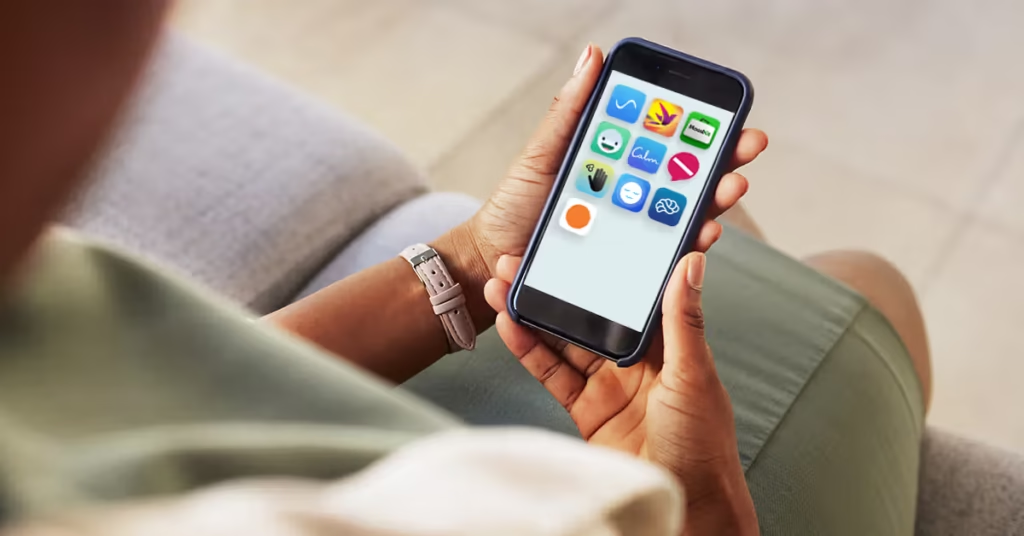
In a world where smartphones, tablets, and laptops are as common as breakfast cereal, it’s no surprise that teens are glued to their screens. I remember watching my niece, Sarah, barely look up from her phone during a family dinner, her thumbs flying across the screen as she texted friends and scrolled through social media. It wasn’t just a distraction—it felt like the device had become an extension of her.
This scene is all too familiar for parents and guardians today. Screen addiction, or problematic screen use, is a growing concern, with studies showing that teens spend an average of 7.7 hours a day on screens, excluding schoolwork. The good news? With the right approach, you can help your teen build a healthier relationship with technology. This guide dives deep into understanding screen addiction, its impacts, and actionable strategies to guide teens toward balance, all while keeping things engaging and relatable.
What Is Screen Addiction, and Why Does It Matter?
Screen addiction isn’t an official medical diagnosis, but it’s a term used to describe excessive, compulsive use of digital devices that interferes with daily life. For teens, this might look like staying up late gaming, neglecting homework to binge-watch shows, or feeling anxious without their phone. The American Academy of Pediatrics notes that excessive screen time can disrupt sleep, reduce physical activity, and even affect mental health, contributing to anxiety and depression.
Think of it like this: screens are designed to keep us hooked. Apps use algorithms to deliver dopamine hits—those little bursts of pleasure we get from a new notification or a winning streak in a game. For teens, whose brains are still developing, these rewards are especially enticing. My friend Lisa, a high school teacher, once shared how a student broke down in tears when asked to put away his phone for a 45-minute class. That’s the grip screens can have. Understanding this pull is the first step to helping teens regain control.
The Impact of Screen Addiction on Teens
The effects of screen addiction ripple through every aspect of a teen’s life. Let’s break it down:
Physical Health
Too much screen time can lead to sedentary habits, increasing the risk of obesity and related health issues. The World Health Organization recommends at least 60 minutes of physical activity daily for teens, but many fall short when screens dominate their time. Blue light from devices also disrupts melatonin production, leading to poor sleep quality. I recall my nephew, Jake, complaining about headaches and tiredness, only to admit he’d been gaming until 2 a.m. most nights.
Mental Health
The link between excessive screen use and mental health is well-documented. A study from the National Institutes of Health found that teens spending more than seven hours daily on screens showed higher rates of anxiety and depression. Social media, in particular, can amplify feelings of inadequacy or loneliness when teens compare themselves to curated online lives.
Academic Performance
Screens can be a double-edged sword for schoolwork. While technology aids learning, constant distractions like notifications or gaming can derail focus. A report by Common Sense Media found that multitasking with screens reduces academic performance, as teens struggle to concentrate on tasks like reading or problem-solving.
Social Skills
Face-to-face interactions are critical for developing empathy and communication skills. Excessive screen use can limit these opportunities, leaving teens less equipped to navigate real-world relationships. I’ve seen this firsthand at family gatherings, where teens retreat to their phones instead of engaging in conversation.
Recognizing the Signs of Screen Addiction
Not every teen who loves their phone is addicted, but certain red flags can help you identify when screen use has crossed a line. Here’s what to watch for:
- Irritability or Anxiety When Offline: Does your teen get upset when asked to put their device away or when they can’t access it?
- Neglecting Responsibilities: Are they skipping homework, chores, or sleep to stay on their screens?
- Social Withdrawal: Are they choosing virtual interactions over spending time with friends or family in person?
- Loss of Interest in Other Activities: Have hobbies like sports or reading taken a backseat to screens?
- Physical Symptoms: Complaints of eye strain, headaches, or disrupted sleep patterns can signal overuse.
If these sound familiar, it’s time to act. But don’t worry—confronting screen addiction doesn’t mean yanking the phone away and hoping for the best. It’s about guiding teens toward healthier habits with empathy and strategy.
Strategies to Help Teens Manage Screen Time
Helping a teen overcome screen addiction requires a mix of understanding, communication, and practical tools. Here are proven strategies to get started:
1. Open a Non-Judgmental Conversation
Start by talking to your teen without blame. Share observations, not accusations. For example, instead of saying, “You’re always on your phone,” try, “I’ve noticed you seem stressed when you’re not online. Can we talk about it?” The Child Mind Institute emphasizes that open dialogue fosters trust and encourages teens to share their struggles. I once sat down with Sarah and asked about her favorite apps. That simple question opened the door to a deeper conversation about why she felt compelled to check her phone constantly.
2. Set Clear Boundaries
Establishing screen-time rules is crucial, but they need to be realistic and collaborative. Work with your teen to create a plan that respects their need for autonomy. The American Psychological Association suggests setting device-free zones (like the dinner table) and times (like an hour before bed). For example, my sister implemented a “no phones after 9 p.m.” rule, which gave her son time to unwind and improved his sleep.
3. Model Healthy Screen Use
Teens learn by example, so reflect on your own habits. Are you checking your phone during family time? Lisa admitted she used to scroll through emails at dinner, which made it hard to enforce rules with her students. By putting her phone away, she noticed her students followed suit more willingly. The Mayo Clinic highlights that parental modeling is one of the most effective ways to influence teen behavior.
4. Encourage Offline Activities
Help your teen rediscover the joy of non-digital hobbies. Whether it’s sports, art, or volunteering, find activities that spark their interest. When Jake started losing interest in gaming, we signed him up for a local soccer league. The physical activity and social connections gave him a new outlet for his energy. Websites like Boys & Girls Clubs of America offer ideas for engaging teen programs.
5. Use Technology to Limit Technology
Screen-time management apps like Apple’s Screen Time or Google’s Family Link can track usage and set limits. These tools allow you to customize restrictions, like blocking apps during homework hours. My friend Mark used an app to cap his daughter’s social media time, which helped her focus on school without feeling micromanaged.
6. Educate About the Impact
Teens are more likely to change when they understand the “why” behind it. Share age-appropriate information about how screens affect their brain, sleep, and mood. The National Institute of Mental Health has resources that explain these effects in simple terms. When Sarah learned how blue light messed with her sleep, she was more open to cutting back on late-night scrolling.
Comparison Table: Screen Time Management Tools
| Tool | Platform | Key Features | Best For | Cost |
|---|---|---|---|---|
| Apple Screen Time | iOS | Usage tracking, app limits, downtime scheduling, parental controls | iPhone/iPad users, families | Free |
| Google Family Link | Android | App approvals, screen time limits, location tracking | Android users, parents of younger teens | Free |
| Qustodio | iOS, Android | Detailed reports, web filtering, panic button for emergencies | Comprehensive monitoring | Free/Paid ($54.95/year) |
| Bark | iOS, Android | Monitors texts, emails, and social media for potential risks | Safety-focused parents | Paid ($14/month) |
| Moment | iOS, Android | Tracks usage, encourages mindful habits, group challenges | Teens wanting self-regulation | Free/Paid ($7.99/month) |
This table compares popular tools to help you choose the right one for your family’s needs. Each offers unique features, so consider your teen’s habits and your goals when selecting one.
Addressing the Root Causes
Screen addiction often masks deeper issues. For some teens, screens are an escape from stress, boredom, or social anxiety. Others may use them to cope with low self-esteem or peer pressure. A study from the Journal of Adolescent Health found that teens with underlying mental health challenges are more likely to develop problematic screen use.
If you suspect your teen is using screens to cope, consider professional support. A therapist or counselor can help uncover root causes and teach healthier coping mechanisms. When Lisa noticed her student’s anxiety spiked without his phone, she connected his parents with a school counselor, who helped him manage stress through mindfulness techniques.
FAQ: Common Questions About Teen Screen Addiction
How much screen time is too much for a teen?
The American Academy of Pediatrics suggests 2–3 hours of recreational screen time daily, though this varies by individual. Focus on whether screen use interferes with sleep, school, or relationships rather than just the hours.
What if my teen refuses to cut back?
Resistance is normal. Start with small, agreed-upon limits and involve them in the process. If they’re still uncooperative, consider professional guidance from a counselor or therapist.
Can screen addiction cause permanent damage?
While long-term effects are still being studied, excessive screen use can impact brain development, particularly in areas tied to attention and emotional regulation. Early intervention can mitigate these risks.
Are some screens worse than others?
Not all screen time is equal. Passive activities like scrolling social media are more likely to contribute to addiction than active ones like coding or video editing. Encourage creative, interactive screen use when possible.
How do I balance screen time with schoolwork?
Set clear boundaries, like designating tech-free study hours and using apps to block distractions. Encourage breaks to boost focus, and ensure screens are used purposefully for learning.
Creating a Long-Term Plan for Balance
Helping your teen overcome screen addiction isn’t a one-and-done fix—it’s a journey. Create a sustainable plan by regularly checking in on their progress. Schedule weekly family meetings to discuss what’s working and what isn’t. Celebrate small wins, like when Sarah went a whole evening without checking her phone, which boosted her confidence to keep going.
Encourage a culture of balance at home. Plan device-free activities, like game nights or outdoor adventures, to strengthen family bonds. My sister started a tradition of Sunday hikes, which gave her kids something to look forward to beyond their screens. Resources like Common Sense Media offer tips for creating tech-healthy environments.
Conclusion: A Path to Healthier Habits
Screen addiction is a challenge, but it’s not insurmountable. By understanding its impacts, recognizing the signs, and implementing thoughtful strategies, you can guide your teen toward a balanced relationship with technology. It’s about more than just cutting screen time—it’s about helping them rediscover the joy of real-world connections, hobbies, and self-discovery. My niece Sarah, for instance, now spends her evenings painting, a passion she rediscovered after limiting her phone use. Your teen can find their spark, too.
Start small: have that first conversation, set one boundary, or try a new activity together. If you’re feeling overwhelmed, resources like the American Academy of Child & Adolescent Psychiatry can provide additional guidance. The goal isn’t to eliminate screens but to help your teen use them in a way that enriches their life, not controls it. What’s the first step you’ll take to support your teen today?




